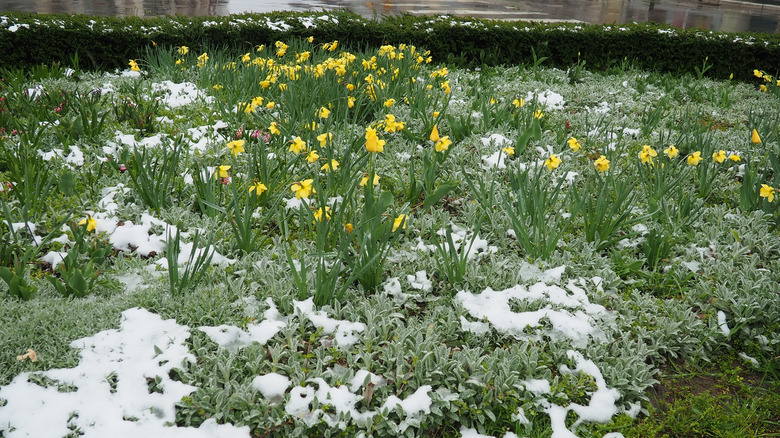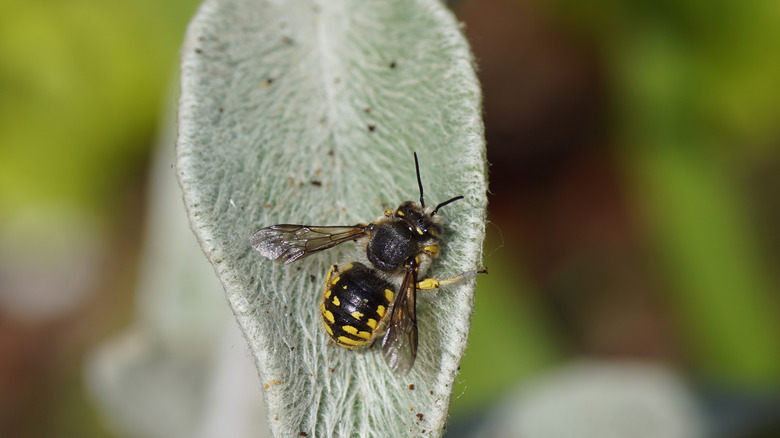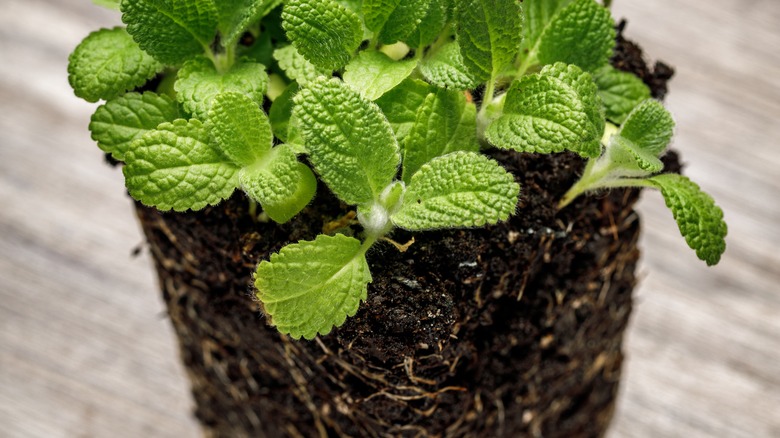Why Lamb's Ear Is A Great Grass Alternative For Your Lawn
For better or worse, many U.S. homeowners have to comply with city and county landscape ordinances. To varying degrees, they're required to make their front lawn look pretty to passersby. Even if you don't have an ordinance where you live, you likely have HOA rules, an annoyingly small verge you have to mow, or you generally care about curb appeal. Maybe you're super passionate about the anti-lawn movement. Hardy, low-maintenance, attractive groundcovers like lamb's ear can help you comply with these regulations — self-imposed or otherwise — without spending hours and dollars on traditional lawn care, especially if the area in question sees little foot traffic.
Lamb's ear, or Stachys byzantina, is a dry-conditions-loving perennial that grows natively from Iran to the Caucasus. It grows well in USDA Hardiness Zones 3 through 9, though it may die back in areas with harsh winters. The leaves are covered in fine hairs hued silvery blue, making them silky-soft to the touch (hence the common name "lamb's ear"). The plant is considered a groundcover since it rarely grows taller than 8 inches (except for its tall summer flower stalks) and forms a thick mass of foliage. It's a great option if you're looking to tap into the xeriscaping trend and help your garden in a drought. Unlike the grasses used in a traditional lawn, it thrives in dry conditions.
Why it's such a good option
The drought-stricken City of Arroyo Grande lists Stachys byzantina 'Silver Carpet' among its "suitable lawn replacement groundcovers." Have a bank that's threatening to collapse? Lamb's ear, specifically the 'Helene von Stein' (Stachys byzantina 'Helene von Stein') cultivar, is great for stabilizing banks. Writing for Nebraska Extension, Karma Larsen, Communications Associate with the Nebraska Forest Service and the Nebraska Statewide Arboretum, recommends lamb's ear for curbside plantings, notably for its ability to withstand occasionally being stepped on, peed on by dogs, and far less care than is typically paid to the average backyard garden.
This is not, however, a plant for the lawn of an active household; lamb's ear holds up to light foot traffic at most. Experts also herald it for landscaping over septic tanks and in the creation of green roofs. There are other, less directly turf-related benefits to growing a lawn of lamb's ear or mixing it with different alternatives. For one, pollinating insects, including some native bees, can't resist the spikes of purple, pollen-filled flowers the plant produces throughout the summer. What's more, it's pet-friendly, so you won't have to worry about Fido digging around in it for that bone he buried last week. It's relatively deer-resistant, too. The hungry herbivores avoid plants with wooly or hairy leaves, finding the texture unpalatable. Conversely, the leaf's silk makes the plant a wonderful addition to a sensory garden.
Get lamb's ear for your lawn
Savvy gardeners know the benefits of starting seeds instead of buying plants. You're lucky with lamb's ear; it grows as easily from seed as seedlings, established plants, or bits off a divided root ball. Commonly available lamb's ear cultivars include 'Cotton Boll,' 'Big Ears,' and 'Silver Carpet,' with the latter boasting the smallest and most ground-hugging leaves. If you're a patient gardener, get a packet of 50 heirloom lamb's ear seeds for just $1.99 from Southern Seeds. Planting out a large area and needing it to look good quickly? High Country Gardens sells trays of nine established 'Silver Carpet' plants for $88.99.
With seeds or seedlings ordered, it's time to learn how to successfully grow a lamb's ear plant. The goal of turf replacement is for the plant to multiply and cover as much ground as possible, and as quickly as possible. Put it in the ground right after the last frost through to the end of fall in full sun (to cultivate the silver color) to partial shade (for plants tinged green). Lamb's ear hates boggy conditions, so be sure to only plant in an area that's high and dry. Also note that it's susceptible to rot; check the plant for dead leaves every spring and pick them off. In four or so years, the patch will start to die in the middle, meaning it's time to divide it. Since it spreads by rhizomes, you'll end up with lots more plants to plant elsewhere!


